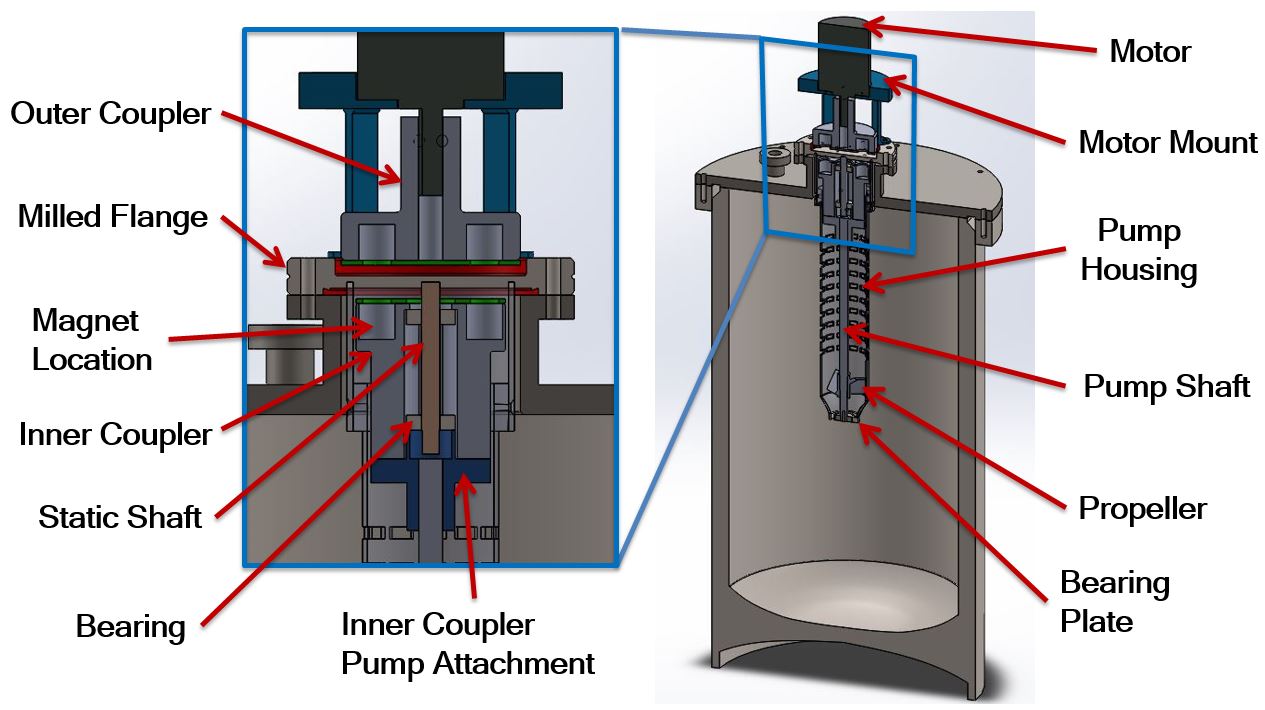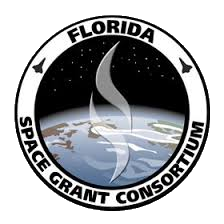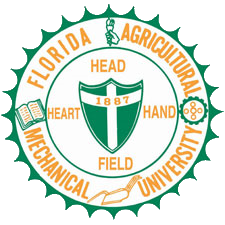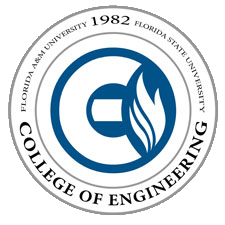For images of the completed system, you can find them in the gallery Here
A complete and functional magnetically coupler pump system for cryogenic tank propellant destratification has been manufactured. As stated before, destratification is necessary to reduce the amount of pressure venting in a cryogenic tank in low gravity environments. This destratification is currently achieved with systems that have their motors fully submerged in cryogens, which causes the system to be expensive and introduces heat into the system. Our design removes this motor from the tank, keeping the system completely sealed using magnetic coupling.
The design was constructed in the design software Solid Works before fabrication and consists of three main sub-assemblies; the outer coupler motor sub-assembly, inner coupler and pump sub-assembly, and the pump housing assembly. Calculations were conducted using the geometry of the pumping system to determine the power and speed requirements for the prototype’s motor as well as the bearing system used. Upon the completion of the fabrication of all the design components the prototype was assembled using the manufacturing procedure. The prototype was then dry tested to ensure that the couplers rotated together and that there was no scraping. The operational procedure of the prototype pump was then devised and was followed for the experimental section of the project.
Testing was then conducted both in water and liquid nitrogen. The system was found to successfully pump water and using a piping system and a flow meter provided to us by our faculty advisor. During these tests a maximum flow rate of 14 gpm was consistently achieved and during tests values of up to 16 gpm were observed. The system was then tested at the National High Magnetic Field Laboratory in liquid nitrogen using the cryostat provided to the group by our sponsor. All cryogenic safety procedures of the NHMFL were followed to ensure a safe test. The system functioned while being fully submerged in liquid nitrogen. To test that the pump successfully destratified the liquid nitrogen and reduced the amount of pressure venting the frequency at which the five psi pressure relief valve was engaged. Comparing to a control test where the pump was off, the frequency of pressure relief decreases from 0.4 Hz to 0.15 Hz, a 63% decrease in the amount of venting. This test shows that the system successfully destratifies the liquid nitrogen while using magnetic coupling.
This project went behind schedule after fabrication times took almost twice as long as previously intended by the original Gantt chart. The project was under-budget even with the addition of the experimental testing materials, but the design itself was able to be constructed well under the supplied budget of $600.
Future recommendations to continue this project on for multiple years would mostly be in improving the errors in the current design. Vibrational analysis could be conducted on the system and dampening of the motor mount could be done to make the system run at higher speeds for long periods of time. An improved design would also reduce the amount of friction in the bearing system to allow for a smoother system operation. Overall the system could be designed to run more smoothly while still meeting the project requirements. If given more time more in depth experiments of the magnet torsional strength could be done to determine the optimum achievable spacing between the couplers as well as the optimal number of magnets to use in each coupler. Also if allowed more time, more testing could be conducted to systematically construct an in-depth flow rate vs. pressure plot for the pump system for operational use. In addition to this type of testing, a method for testing the flow rate in liquid nitrogen could also be conducted to more accurately show the operation of the system in cryogens.









